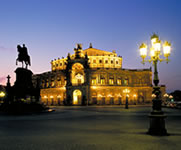Contact
Contact
German Convention Bureau
Münchener Straße 48
60329 Frankfurt am Main
Email:
[email protected]
Internet:
www.gcb.de
Münchener Straße 48
60329 Frankfurt am Main
Email:
[email protected]
Internet:
www.gcb.de
Art & culture

The 68 metre high steeple of St. Mary's Cathedral in Fürstenwalde can be seen for miles around. Together with Brandenburg an der Havel and Havelberg, Fürstenwalde is one of the three cathedral cities in the state of Brandenburg. In its current form, St. Mary's is a triple-naved cathedral church which was built in the mid-1400s. The steeple is a particularly noteworthy feature. The most valuable part of the interior is the 12 metre high sacrament house created by the master woodcarver Tilmann Riemenschneider which dates back to the year 1517. Concerts are regularly held in the cathedral.
Storkow Castle was originally a moated medieval fortress built on a fieldstone base and is one of the oldest and most important castles in East Brandenburg. Excavations suggest that it was constructed soon after 1136 as a border stronghold by the once powerful Wettin dynasty. In the early 16th century the Bishops of Lebus made considerable alterations to the castle, adding elements of Renaissance-style architecture.
Beeskow Castle was first mentioned in the town's records in 1272. At that time it was owned by the noblemen of Strehle, the rulers of the Beeskow-Storkow district. Together with castles at Lieberose, Friedland and Storkow and a number of smaller fortresses, it formed part of a strong network of moated castles. After several changes in ownership, the castle and its lands were taken over in 1575 by the House of Hohenzollern, until it was acquired by the town of Beeskow in 1915.
Travel Planner
Select an option...
Map of Germany
Hotels in Bad Saarow
Loading



